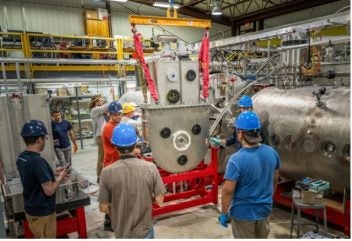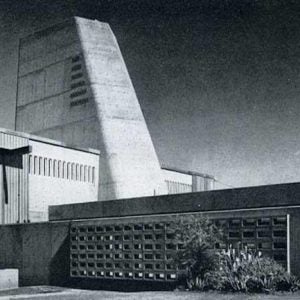
US fusion start-up, Commonwealth Fusion Systems (CFS), has delivered two high-tech superconducting magnets to the University of Wisconsin for its WHAM (Wisconsin HTS Axisymmetric Mirror) experiment that seeks to develop a fusion energy approach known as magnetic mirror fusion. The WHAM fusion reactor design is entirely different compared with the tokamak design. Strong magnetic fields create a tube of plasma instead of the doughnut seen in tokamaks.
Scientists first explored magnetic mirror fusion in the 1950s, but enthusiasm waned because of difficulties stabilising the plasma and reaching the conditions needed for fusion. The high-temperature superconducting (HTS) magnets shipped to WHAM are the first products delivered as part of the CFS’s strategy to build magnets not just for its own power plants but also for other promising applications.
The primary mission of CFS –spin-out from the Massachusetts Institute of Technology (MIT) in 2018 – is to develop fusion devices of its own design, including the SPARC tokamak now under construction. But the technology that enables SPARC’s powerful magnets can also significantly improve other fusion applications. A number of companies have approached CFS for assistance given its capabilities in designing, developing, and manufacturing HTS magnets for other markets.
CFS worked with scientists at MIT to develop a new type of rare earth barium copper oxide (REBCO) magnet that produces an incredibly strong magnetic field. Because of their strength the magnets can be made smaller and still confine plasma within the reactor. Smaller magnets are cheaper and require less supporting material and equipment.
“We have the capability to build some of the highest power magnets in the world,” said CFS Chief Commercial Officer Rick Needham. “Designing and building these magnets for other applications is a business opportunity that could be in the billions of dollars.”
CFS designed and built the superconducting magnets for WHAM at its Devens, Massachusetts, headquarters, nicknaming them Thing 1 and Thing 2 after characters in the Dr Seuss children’s book The Cat in the Hat. The proprietary magnet technology, based on thin and flexible HTS tape, accommodates very high electrical currents that generate very high magnetic fields. The magnets are self-contained systems that have all the needed functions including cryogenic refrigeration, vacuum pumping, control, and monitoring. These are all designed, constructed, and supplied by CFS as a turnkey system.
With the high magnetic fields made possible by HTS magnets, the University of Wisconsin looked again at mirror technology supported by funding from the US Department of Energy (DOE) Advanced Research Projects Agency–Energy (ARPA-E).
Starting in 2019, the university sought CFS’s help to deliver the magnet technology. Together they developed magnet concepts optimised for a new generation of mirrors. This led to a system of two identical flat and thin magnets that can reach a magnetic field of 17 tesla in the bore and over 20T on the magnets themselves — about 400,000 times stronger than Earth’s magnetic field.
WHAM is expected to create the world’s highest magnetic field for a mirror plasma. The experiment will help validate computer models for designing more powerful magnetic mirror devices that one day could become fusion power plants for some applications.
“Breathing life into mirror fusion is only possible with the new generation of HTS magnets and the teams of people who can build the magnets from these new tapes,” said Cary Forest, a physics professor at Wisconsin University who is WHAM’s scientific leader and the principal investigator for the ARPE-E work.
“WHAM has led to a lot of first encounters at CFS for manufacturing, testing, and development,” said Grant Kristofek, Senior Manager of Superconducting Magnet Products at CFS and leader of the company’s collaboration with the university. “It means our small team working on this project could have a big impact on CFS overall.”






